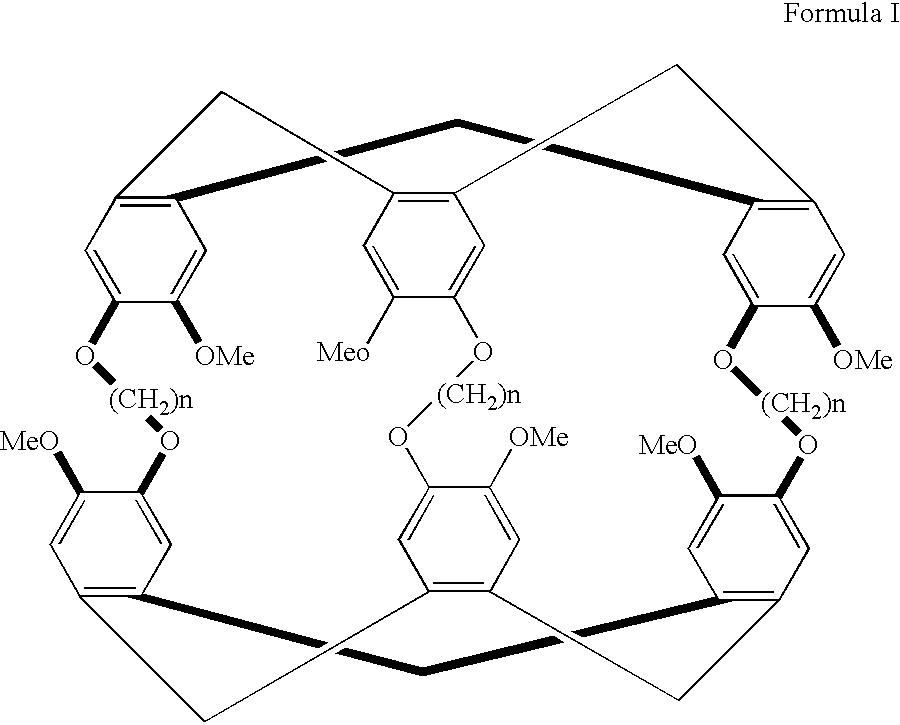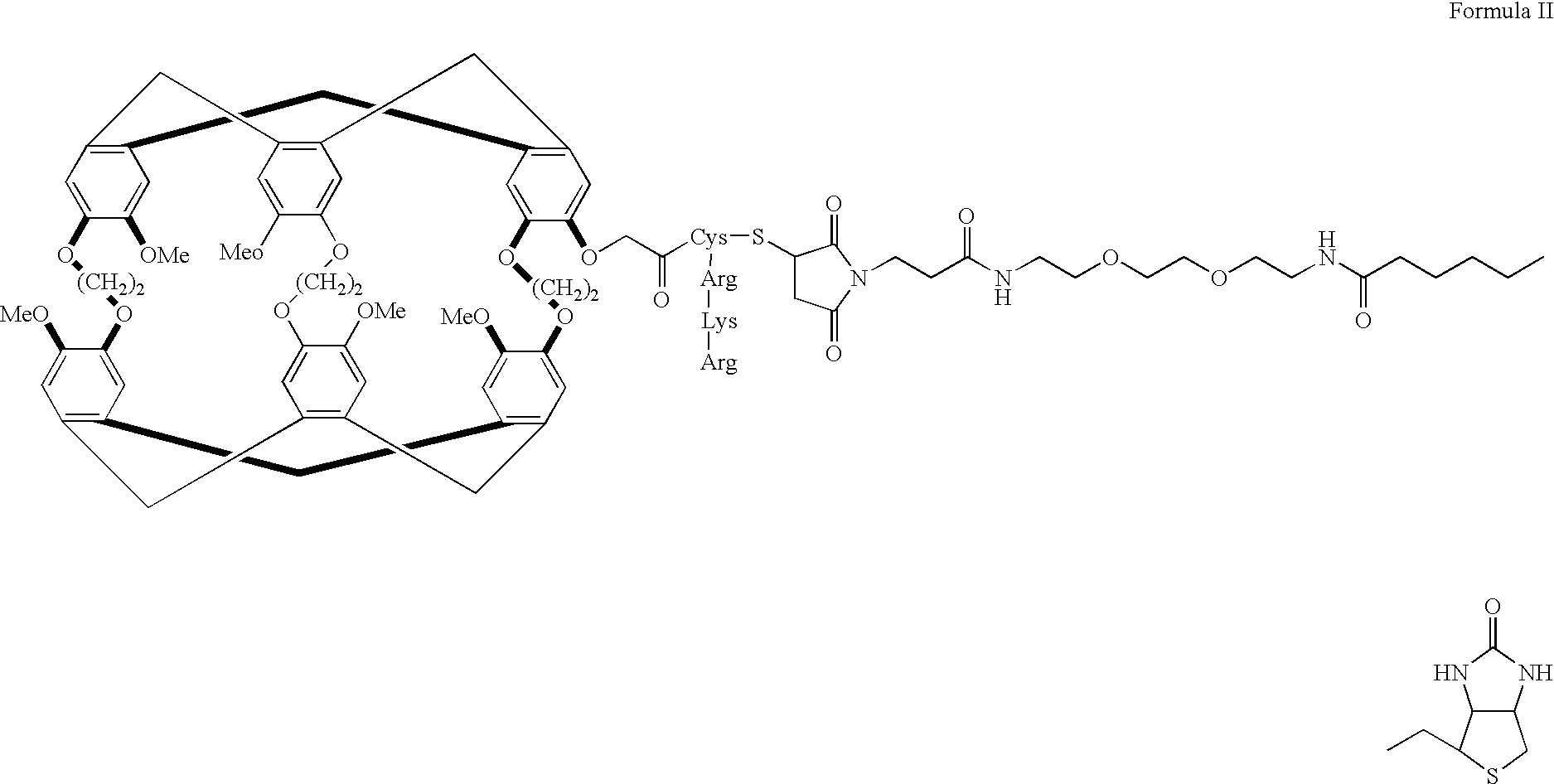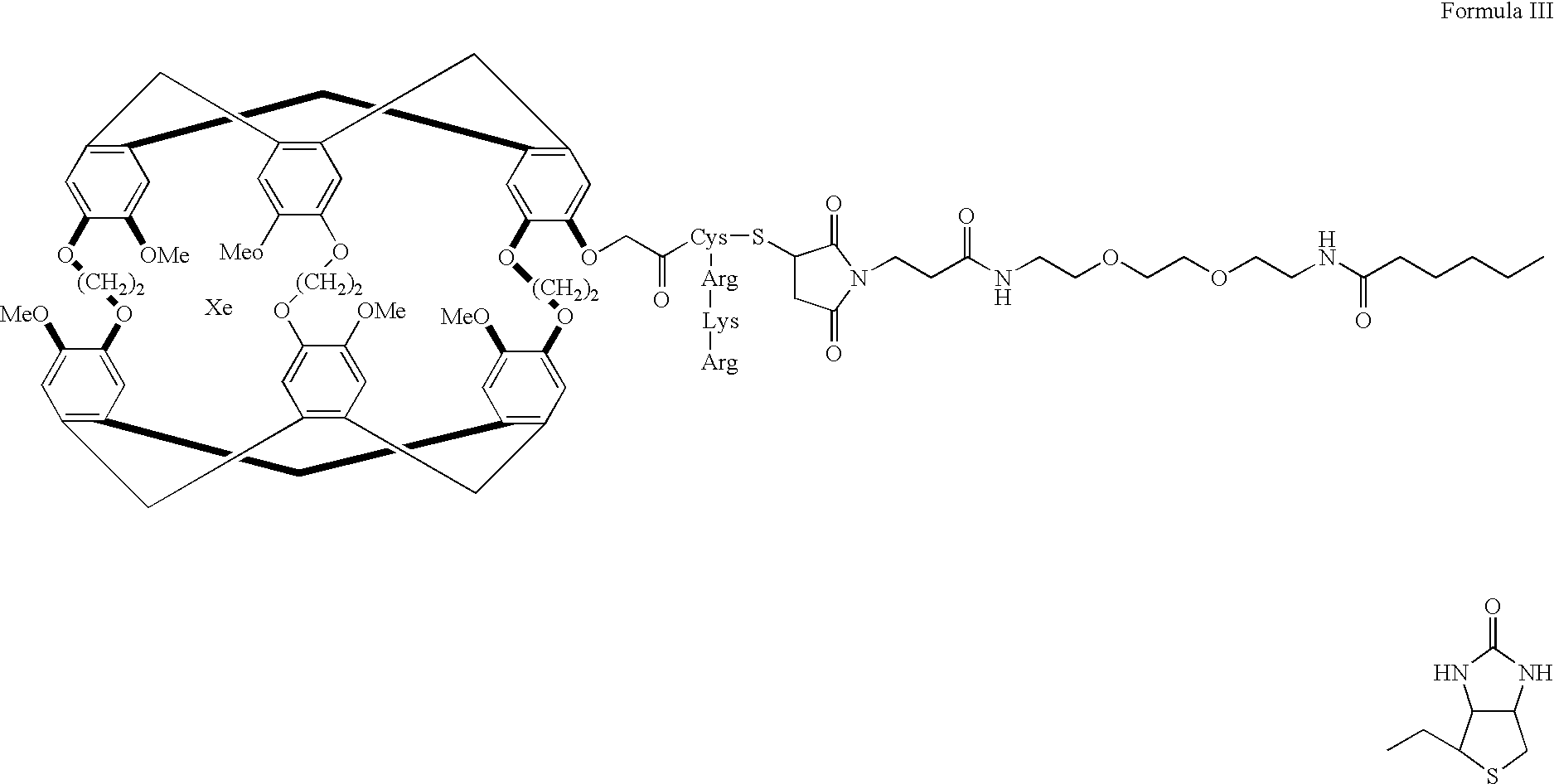Method for detecting macromolecular conformational change and binding information
a conformational change and macromolecular technology, applied in the direction of magnetic variable regulation, measurement using nmr, instruments, etc., can solve the problems of limiting the use of simultaneous detection to a small number of analytes, unable to extend the multiplexing capability of these assays, and spectral complexity and low sensitivity of nmr spectroscopy normally preclude its use as a molecular target detector
- Summary
- Abstract
- Description
- Claims
- Application Information
AI Technical Summary
Benefits of technology
Problems solved by technology
Method used
Image
Examples
experimental example # 1
EXPERIMENTAL EXAMPLE #1
Functionalized Xenon as a Biosensor
[0101] By way of example and not by way of limitation, one embodiment of the subject invention comprises a functionalized system that exhibits molecular target recognition. FIG. 11 (without xenon) and 12 (with xenon) show a biosensor molecule designed to bind both xenon and protein. Analogous to the general schematic diagrams seen in FIGS. 9A and 9B, the specifically synthesized subject biosensor molecule consists of three parts: the cage 15, which contains the xenon 10; the ligand 20, which directs the functionalized xenon 10 to a specific protein; and the tether 50, which links the ligand 20 and the cage 15. In this molecule, it is expected that the binding of the ligand 20 to the target protein (as in analogous FIG. 9B) will be reflected in a change of the xenon NMR spectrum.
[0102] The biotin (ligand second binding region 20) and avidin (target species) couple was chosen because of its high association constant (.about.10....
experimental example # 2
EXPERIMENTAL EXAMPLE #2
Detection of Conformational Changes in Proteins Having a Known Xenon Binding Site with a Non-Functionalized .sup.129Xe Sensor: Maltose Binding Protein (MBP), Ribose Binding Protein (RBP), and Glucose / Galactose Binding Protein (GGBP)
[0112] A: Maltose Binding Protein (MBP)
[0113] MBP (SwissProt data base number MBP: P02925) was expressed from a PET vector in E. Coli BL21(DE3) cells and purified using DEAE ion-exchange and Superdex 75 size-exclusion chromatography (Pharmacia Biotech). Lyophilized protein was dissolved in a buffer containing 50 mM Tris-HCl pH 7.6, 100 mM KCl, 20% D.sub.2O, and 1 mM sugar when indicated. In a manner similar to that previously reported,(Wolber, J.;
[0114] Cherubini, A.; Dzik-Jurasz, A. S.; Leach, M. 0.; Bifone, A. Proc. Natl. Acad. Sci. U.S.A. 1999, 96, 3664-3669) protein samples were mixed in a 2:1 ratio with buffer containing .about.4-5 mM laser-polarized xenon (natural abundance .sup.129Xe, Isotec) immediately prior to data acquisi...
experimental example # 3
EXPERIMENTAL EXAMPLE #3
Detection of Conformational Changes in a Protein with No Currently Known Xenon Binding Site With A Non-Functionalized .sup.129Xe Sensor: Nitrogen Transcription Regulator C (NTRC)
[0129] FIG. 20 shows .sup.129Xe chemical shift data for nitrogen transcription regulator (NTRC) as a function of NTRC concentration for the activated (NTRC BeF.sub.x) form (.box-solid.) and the inactivated form (.diamond-solid.).
[0130] For NTRC, the SwissProt protein data base number is NTRC: P41789. NTRC is from Salmonella Typhimurium and was expressed recombinantly in E. Coli. Expression of the gene was done from PET vector in E. Coli strain BL21 (DE3). Cells were grown in Luria Broth (LB) media to A.sub.600=0.8 and induced with 1 mM IPTG. Cells were harvested three hours later. The NTRC protein was purified with appropriate ion exchange and size exclusion chromatography. Buffer conditions for the NMR experiments are identical to that for MBP and the NMR data was collected in an equi...
PUM
| Property | Measurement | Unit |
|---|---|---|
| Fraction | aaaaa | aaaaa |
| Chemical shift | aaaaa | aaaaa |
| Chemical shift | aaaaa | aaaaa |
Abstract
Description
Claims
Application Information
 Login to View More
Login to View More - R&D
- Intellectual Property
- Life Sciences
- Materials
- Tech Scout
- Unparalleled Data Quality
- Higher Quality Content
- 60% Fewer Hallucinations
Browse by: Latest US Patents, China's latest patents, Technical Efficacy Thesaurus, Application Domain, Technology Topic, Popular Technical Reports.
© 2025 PatSnap. All rights reserved.Legal|Privacy policy|Modern Slavery Act Transparency Statement|Sitemap|About US| Contact US: help@patsnap.com



